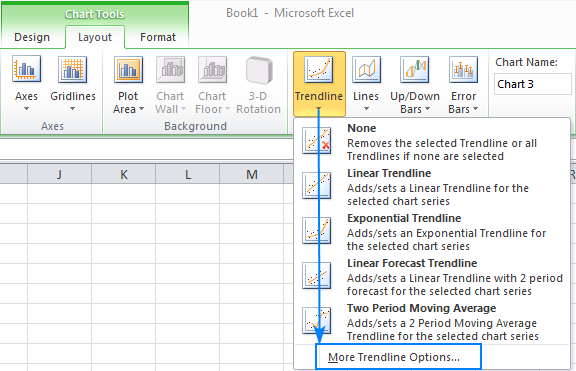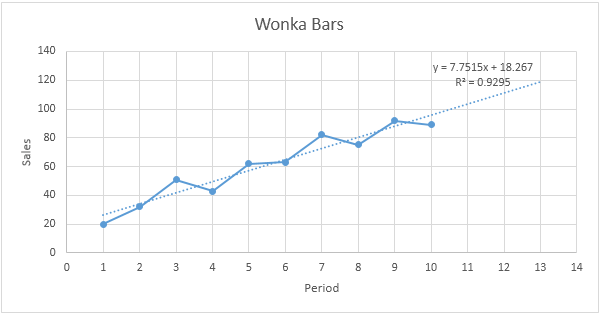
Is there anyway to get excel to trendline the first few data.
Moving Average : This trendline is useful in forecasting through moving average. However when i plot the trendline, it does the entire data set and not just the first few points. Like a power trendline, you can’t use an exponential trendline with negative or zero values. Exponential: An exponential trendline is also a curve line that’s useful for data sets with values that rise or fall at increasingly higher rates. This trendline is only possible for positive values. Power: A power trendline is another curve line used with data sets comparing values that increase at a specific rate. The fluctuations are seen as a hill or valley in the trendline. Polynomial: A polynomial trendline is also a curved line used to visualize data fluctuations. It’s a best-fit curved line and uses a negative and/or positive values. Logarithmic: This one is commonly used when there are quick changes in the data which levels out. Results are easy to interpret as they’re either increasing or decreasing at a steady rate. Linear: From the name itself, this is a best-fit straight line usually used with simple linear data sets. In Excel, most charts allow trendlines except for pie, radar, 3-D, stacked charts and other similar ones.Īs stated earlier, there are 6 different types of trendlines: 
It specifies the value at time "t" by the last period's value, a drift, a trend, and a stochastic component.A trendline, also called “a line of best fit”, is an analytical tool that is used to visualize and represent the behavior of a data set to see if there’s a pattern.
Random Walk with Drift and Deterministic Trend (Y t = α + Y t-1 + βt + ε t ) Another example is a non-stationary process that combines a random walk with a drift component (α) and a deterministic trend (βt). A non-stationary process with a deterministic trend has a mean that grows around a fixed trend, which is constant and independent of time. Or select the trendline itself, press Ctrl+1 to open the Format Trendline task pane, and uncheck the Display Equation on Chart box. 
Both include a drift and a white noise component, but the value at time "t" in the case of a random walk is regressed on the last period's value (Y t-1), while in the case of a deterministic trend it is regressed on a time trend (βt). To remove a trendline equation, select it (it behaves like a regular text label) and press the Delete key.
Deterministic Trend (Y t = α + βt + ε t ) Often a random walk with a drift is confused for a deterministic trend. It also does not revert to a long-run mean and has variance dependent on time. #Excel trendline plus#
Random Walk with Drift (Y t = α + Y t-1 + ε t ) If the random walk model predicts that the value at time "t" will equal the last period's value plus a constant, or drift (α), and a white noise term (ε t), then the process is random walk with a drift. Another characteristic of a random walk is that the variance evolves over time and goes to infinity as time goes to infinity therefore, a random walk cannot be predicted. 
It is a non-mean-reverting process that can move away from the mean either in a positive or negative direction.
Pure Random Walk (Y t = Y t-1 + ε t ) Random walk predicts that the value at time "t" will be equal to the last period value plus a stochastic (non-systematic) component that is a white noise, which means ε t is independent and identically distributed with mean "0" and variance "σ²." Random walk can also be named a process integrated of some order, a process with a unit root or a process with a stochastic trend.







 0 kommentar(er)
0 kommentar(er)
